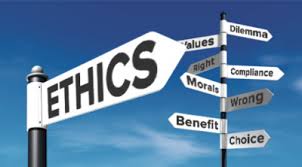A. Luttrella, S. Sacchib, & M. Brambillab
Journal of Experimental Social Psychology
Volume 98, January 2022, 104246
Abstract
The Moral Primacy Model proposes that throughout the multiple stages of developing impressions of others, information about the target's morality is more influential than information about their competence or sociability. Would morality continue to exert outsized influence on impressions in the context of a decision for which people view competence as the most important attribute? In three experiments, we used an impression updating paradigm to test how much information about a target's morality versus competence changed perceivers' impressions of a job candidate. Despite several pilot studies in which people said they would prioritize competence over morality when deciding to hire a potential employee, results of the main studies reveal that impressions changed more when people received new information about a target's immorality than about his incompetence. This moral primacy effect held both for global impressions and willingness to hire the target, but direct effects on evaluations of the target as an employee did not consistently emerge. When the new information about the target was positive, we did not reliably observe a moral primacy effect. These findings provide important insight on the generalizability of moral primacy in impression updating.
Highlights
• People reported that hiring decisions should favor competence over morality.
• Impressions of a job candidate changed more based on his morality (vs. competence).
• Moral primacy in this context emerged only when the new information was negative.
• Moral primacy occurred for general impressions more than hiring-specific judgments.
Conclusion
In sum, we tested the boundaries of moral primacy and found that even in a context where other dimensions could dominate, information about a job candidate's immorality continued to have disproportionate influence on general impressions of him and evaluations of his suitability as an employee. However, our findings further show that the relative effect of negative moral versus competence information on domain-specific judgments tended to be smaller than effects on general impressions. In addition, unlike prior research on impression updating (Brambilla et al., 2019), we observed no evidence for moral primacy in this context when the new information was positive (although this pattern may be indicative of a more general valence asymmetry in the effects of morally relevant information). Together, these findings provide an important extension of the Moral Primacy Model but also provide useful insight on the generalizability of the effect.








